The Machinery of Whiteness
Steve Martinot
The Machinery of Whiteness
Studies in the Structure of Racialization

TEMPLE UNIVERSITY PRESS
Philadelphia, Pennsylvania 19122
www.temple.edu/tempress
Copyright 2010 by Temple University
All rights reserved
Published 2010
Library of Congress Cataloging-in-Publication Data
Martinot, Steve.
The machinery of whiteness : studies in the structure of racialization /
Steve Martinot.
p. cm.
Includes bibliographical references and index.
ISBN 978-1-4399-0051-2 (cloth : alk. paper)
ISBN 978-1-4399-0052-9 (pbk. : alk. paper)
1. WhitesRace identity. 2. RacismUnited StatesHistory.
3. United StatesRace relationsHistory. I. Title.
HT1575.M336 2010
 The paper used in this publication meets the requirements of the American National Standard for Information SciencesPermanence of Paper for Printed Library Materials, ANSI Z39.48-1992
The paper used in this publication meets the requirements of the American National Standard for Information SciencesPermanence of Paper for Printed Library Materials, ANSI Z39.48-1992
2 4 6 8 9 7 5 3 1
Contents
Acknowledgments
M any of the chapters in this book are modified versions of articles that I published previously. Thus, I want to both thank and acknowledge the journals in which they were published. , The Dual-State Character of the United States, is a modified version of The Dual-State Character of US Coloniality: Notes toward Decolonization, Human Architecture 5 (Summer 2007): 371382. My warm thanks go to Behrooz Tamdgidi, the editor of that journal, for his friendship, his social insight, and his ability to organize exceptionally interesting conferences, the kind that permit experimentation with analyses that open new avenues of thought.
In particular, I owe special thanks to Micah Kleit, editor extraordinaire at Temple University Press, without whom this book would not have been possible. He believed in this project, supported it, and consistently offered invaluable encouragement as he ferried it through the long publication process.
Many people participated along the way, as I wrote the articles and then put together this book. I thank Norma Alarcon for never letting me forget the centrality of women to anti-colonial processes; Theodore Allen (unfortunately posthumously; he is greatly missed) and Tommy Lott for their questioning and probing of some of my analyses; Maria Guadalupe Davidson, Emily Lee, and Mario Senz for their responses and additions to my general approach; Jared Sexton for his critiques, insight, and editorial assistance; and Stefan Mattesich for being someone to whom I could present my ideas of cultural structure with the knowledge that he would understand and help take them further. I thank Bob Stone, Betsy Bowman, and Cliff DuRand for the many philosophical and political discussions we have had in various parts of the world and for their passion and dedication to the anti-colonialist project. And I thank Sally Sommer, whose own dedication to a pro-democracy ethic, to the power and virtue of community autonomy, has been not only an inspiration but also a source of articulation for many of the ideas herein. I acknowledge Anibal Quijano and Enrique Dussel for the inspiration and new directions both gave to my thinking about the history of colonialism and the structure of coloniality in the United States. I am grateful to Dylan Rodriguez for the strength, passion, and insight contained in his critique of and opposition to that coloniality and to Steven Myers for his belief in my project and his love for the strength of the people. Many others have added their ideas to the mix, enriching my own, including Howard Winant, Ruthie Gilmore, Rick Busacca, Walter Johnson, and Anneka Citrin. And finally, I wish to reach out to and touch Mary Ann Oliveau Brewin, who both stood by me and gave me space in which to work, somehow imagining that something might come out of it.
Introduction
The Shadow of a Machine
When we see a bulldozer knocking down a house, crushing the furniture and belongings of its former inhabitants to rubble, to be scooped into trucks and hauled away, we know what is happening. Large machinery is obliterating an essential part of their lives. Some persons have lost their claim to exist in that place on the orders of someone else with greater power. The bulldozer driver is carrying out that power. We can assume that there were judicial procedures that legitimized this destruction. Or we can inquire what right someone had to destroy the residents status and habitat, and hope to receive a response commensurate with the damage done.
When, in Jena, Louisiana, in 2006, a different social machinery does the damage during racial hostilities in the high school, things are not so clear. In one incident, a white student pulled a gun on a black student at a convenience store, in response to which the black student knocked him down and disarmed him. Yet it was the black student who was arrested and charged with assault and theft, while no charges were levied against the white student. When something like that occurs, we are not so sure we know what is happening.until after it hits. By then, after his indictment, this black students ability to inhabit this world with dignity, which is contingent on his ability to defend himself against assault, has been bulldozed by a cold and distant legal process. His residence in the sanctity of personhood has been judicially damaged, his freedom chained to a bail bond. (Later, when a fight developed between two groups of students, white and black, six black students were indicted for attempted murder.) We can see who signed the order. But the fact that there was an indictment to be signed in the first place marks the operation of this social machinery. It lurks without recourse until it invades the space of certain peoples lives. We search for the right of self-defense under the rubble.
In the case of the house, there ostensibly will have been courts, property rights, and deeds involved. Yet neither courts nor deeds have the power to tear down a house; they require the use of real bulldozers. And neither can a court tear down an individuals personhood or dignity without the use of a powerful piece of social machinery. Racism is not a big enough term to describe it.
In the case of the bulldozer, irate neighbors may come to the residents aid, stand in its way, or stop it through appeals to reason, court injunctions, civil disobedience, or even sabotage, in pursuit of the self-evident truth that human life is more important, and more sacred, than property rights. This is, of course, risky, and we must pay homage to Rachel Corrie, who was crushed to death in Rafah, Gaza, on March 16, 2003, by an Israeli bulldozer as she stood, clearly visible, between it and a still-inhabited Palestinian house. But how do irate neighbors stand in the way of social machinery that tears apart a black students life if they cannot see it coming? There may be no surprise when it arrives. Its destructiveness may be totally familiar as the same old white racism. But to whom can they appeal to stop it before it hits?
People have been responding to the existence of racism for 300 years, attacking its every overt daily expression. Yet after 300 years, it remains, changing form over time, in response to political conditions, while producing more damage. Whenever we have gotten strong enough to interfere with its operations (as the civil rights movements did), it comes back wearing different language, speaking an up-to-date lingo, while creating more of the same old effects. These effects, as Leonard Harris tells us, include polymorphous agent[s] of death, premature births, shortened lives, starving children, debilitating theft, abusive larceny, degrading insults, and insulting stereotypes forcibly imposed (Harris 1999, 437). These effects, the racial hierarchies and segregations that get taken for granted, are too dire for us to simply watch them occur again and again, responding after the damage is done. Their resurgence, their recurrence, their longevity in the face of centuries of opposition suggest that their source lies deeper in this culture than we had imagined. Something keeps rebuilding that machine, renovating it, something beyond the nefarious individual prejudices and tainted desires by which racism manifests itself.
Next page


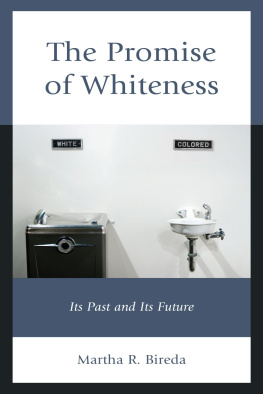

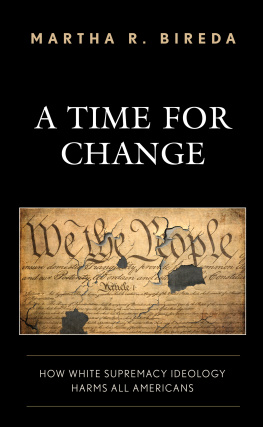
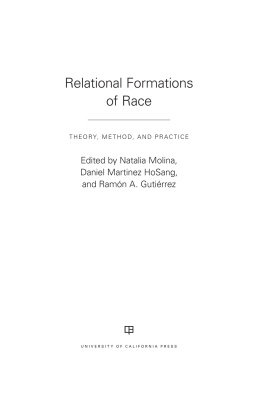
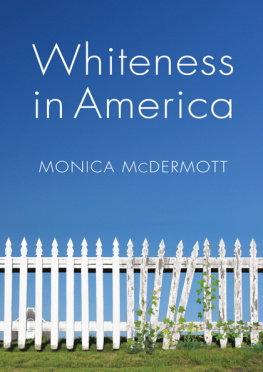
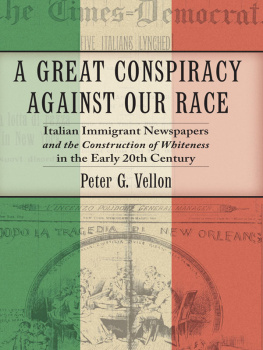

 The paper used in this publication meets the requirements of the American National Standard for Information SciencesPermanence of Paper for Printed Library Materials, ANSI Z39.48-1992
The paper used in this publication meets the requirements of the American National Standard for Information SciencesPermanence of Paper for Printed Library Materials, ANSI Z39.48-1992